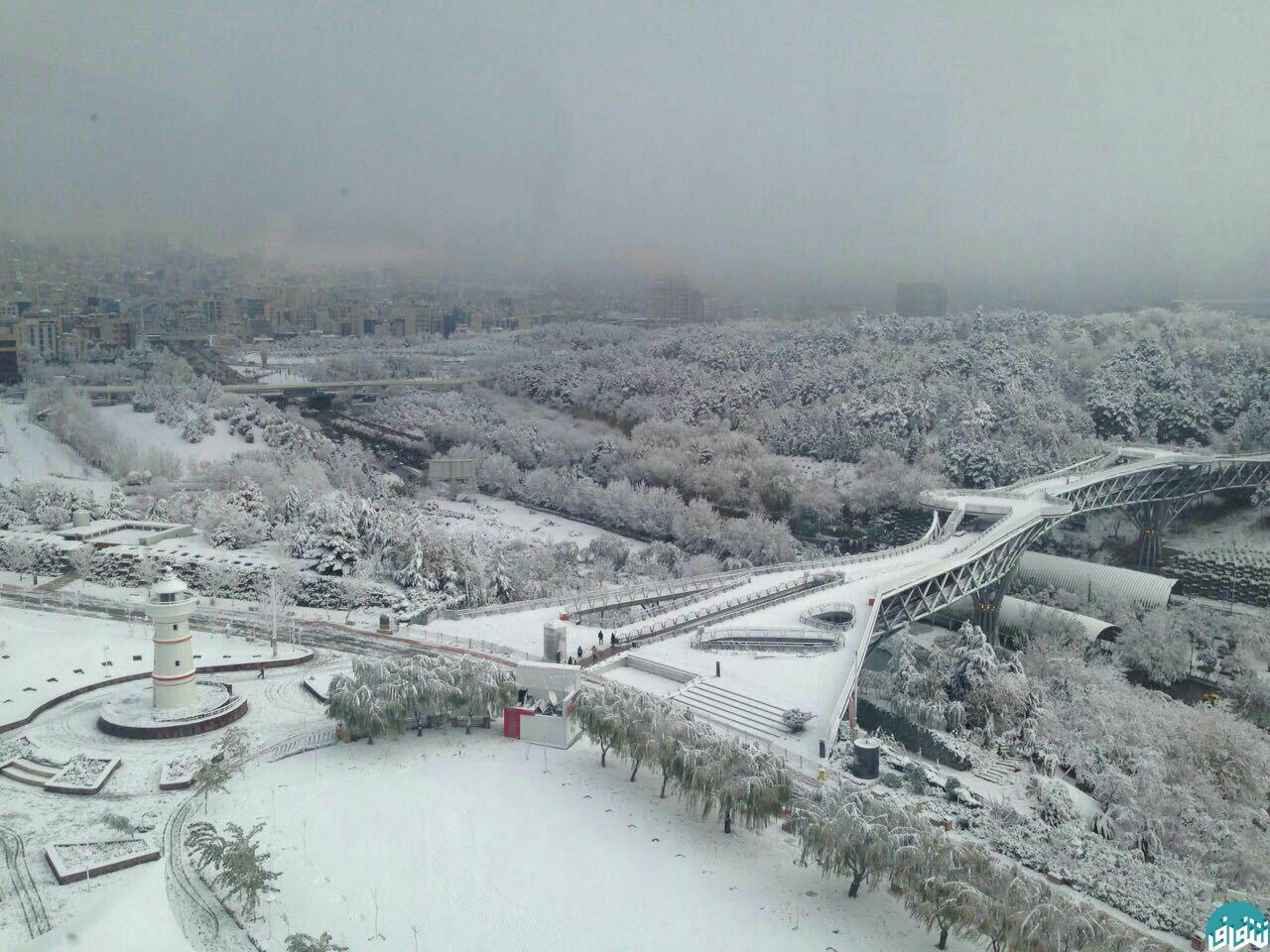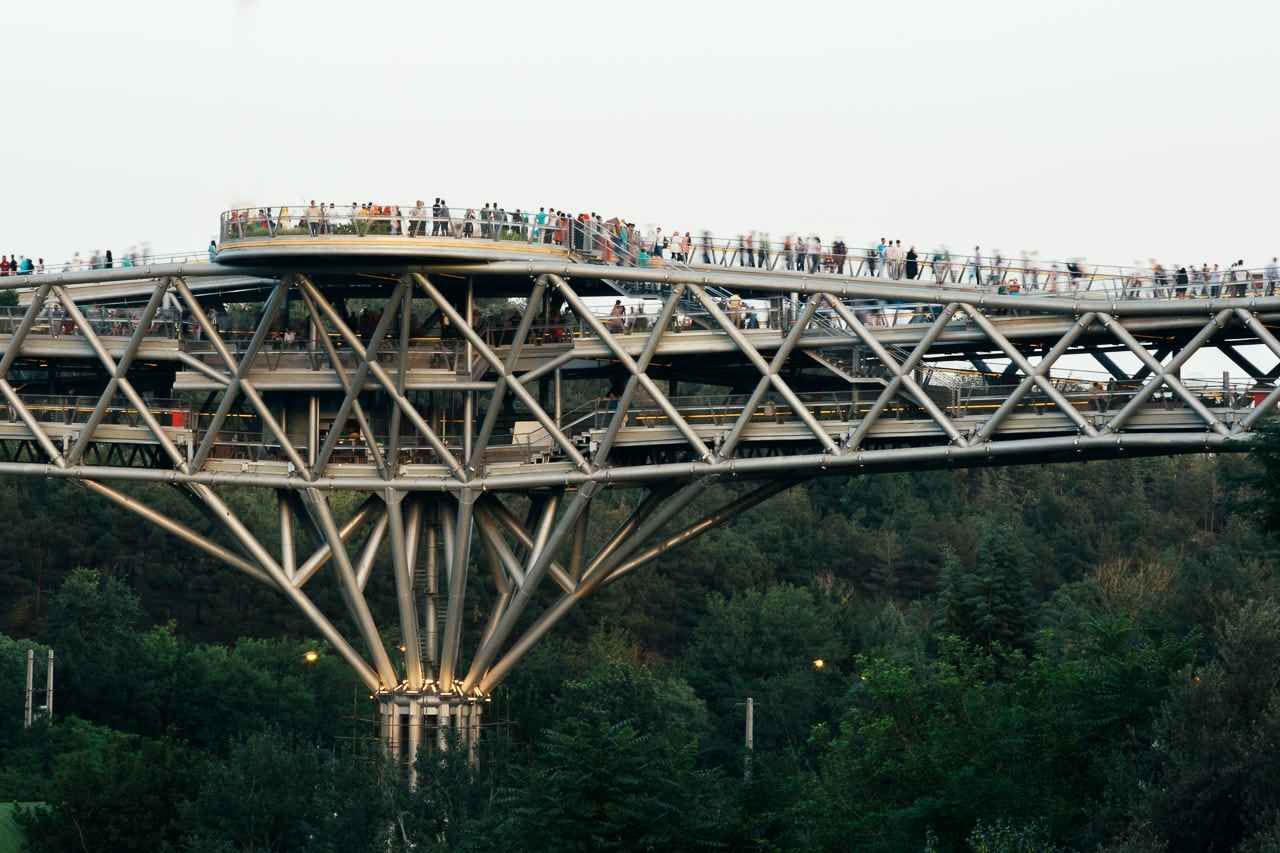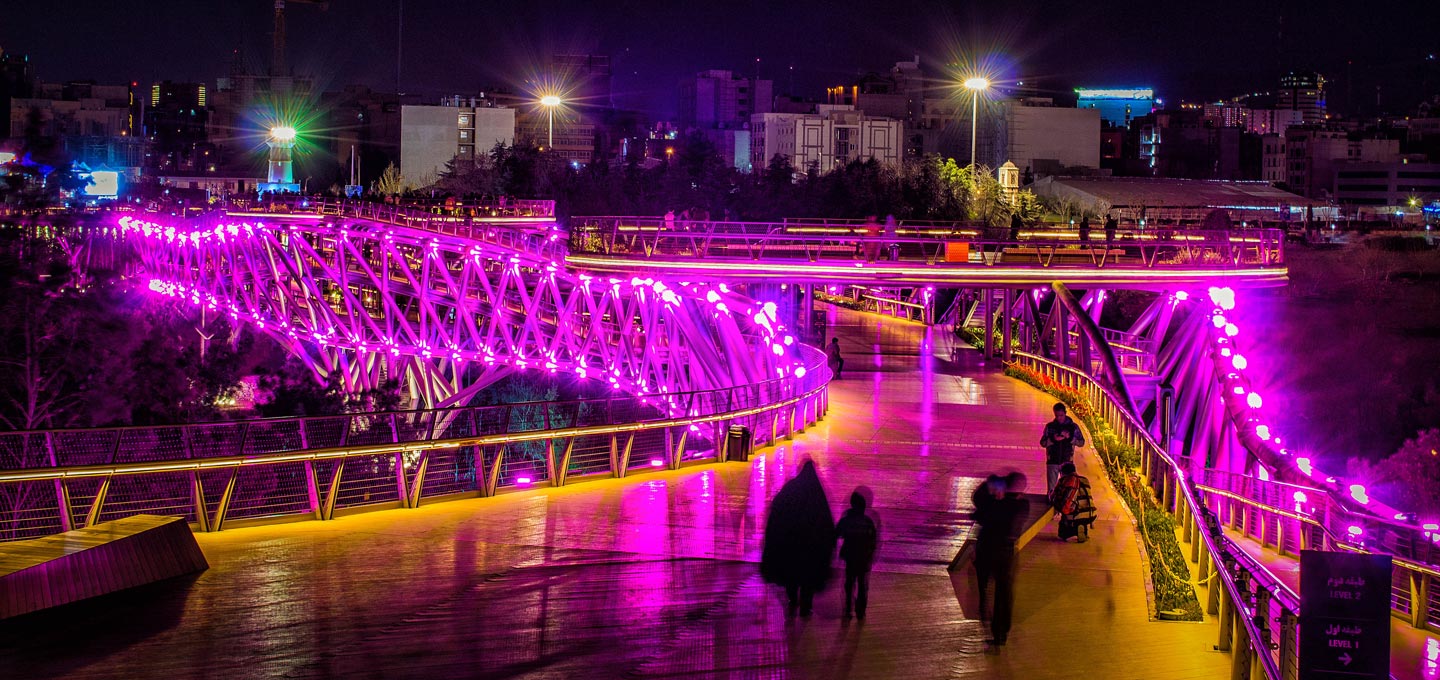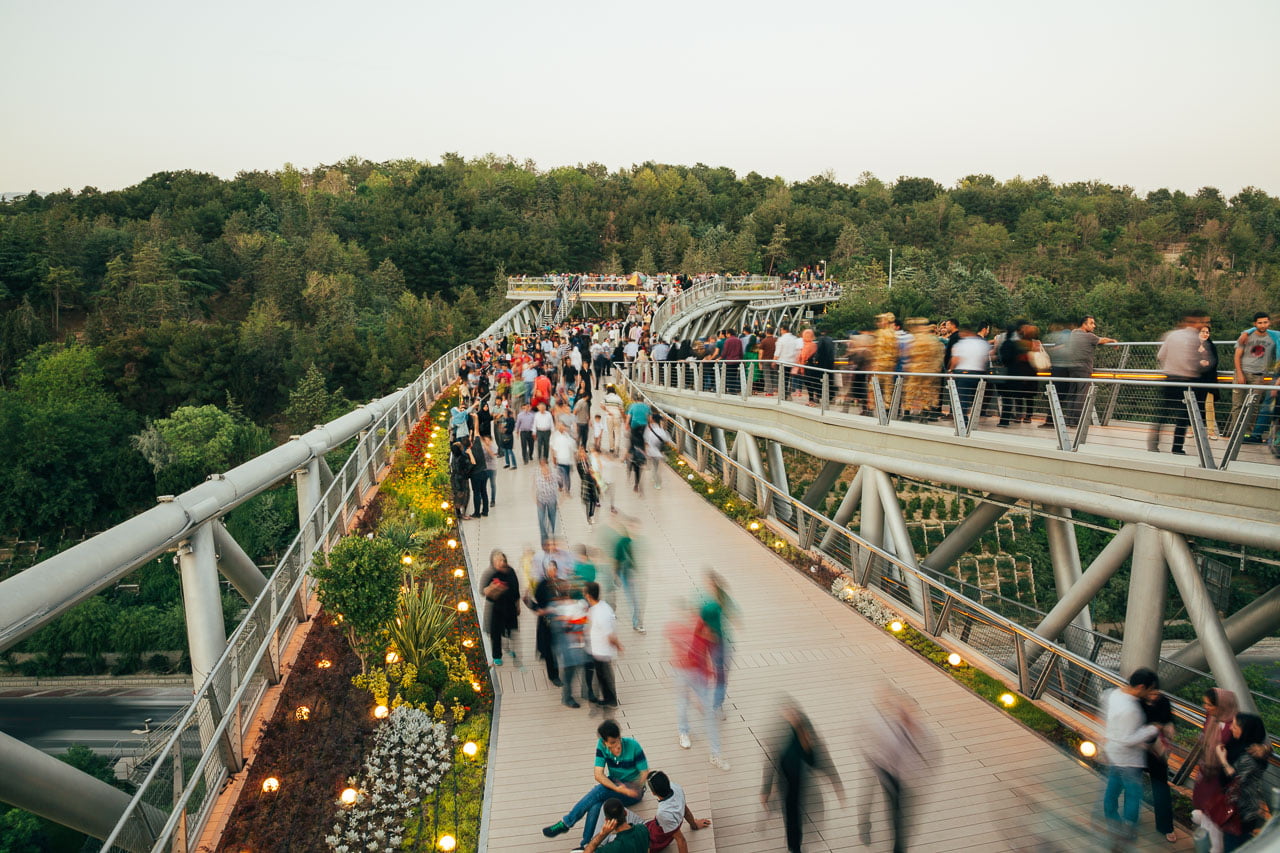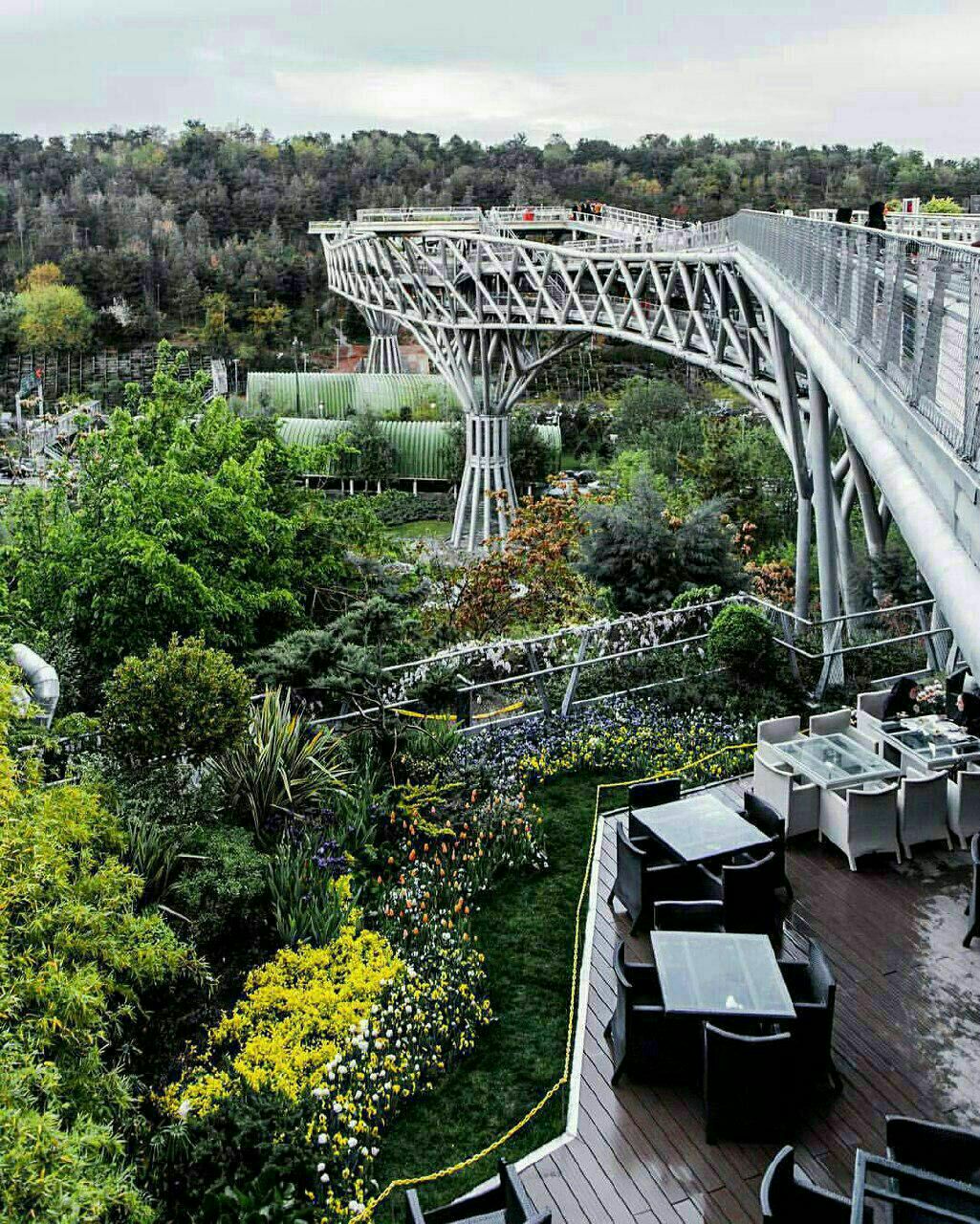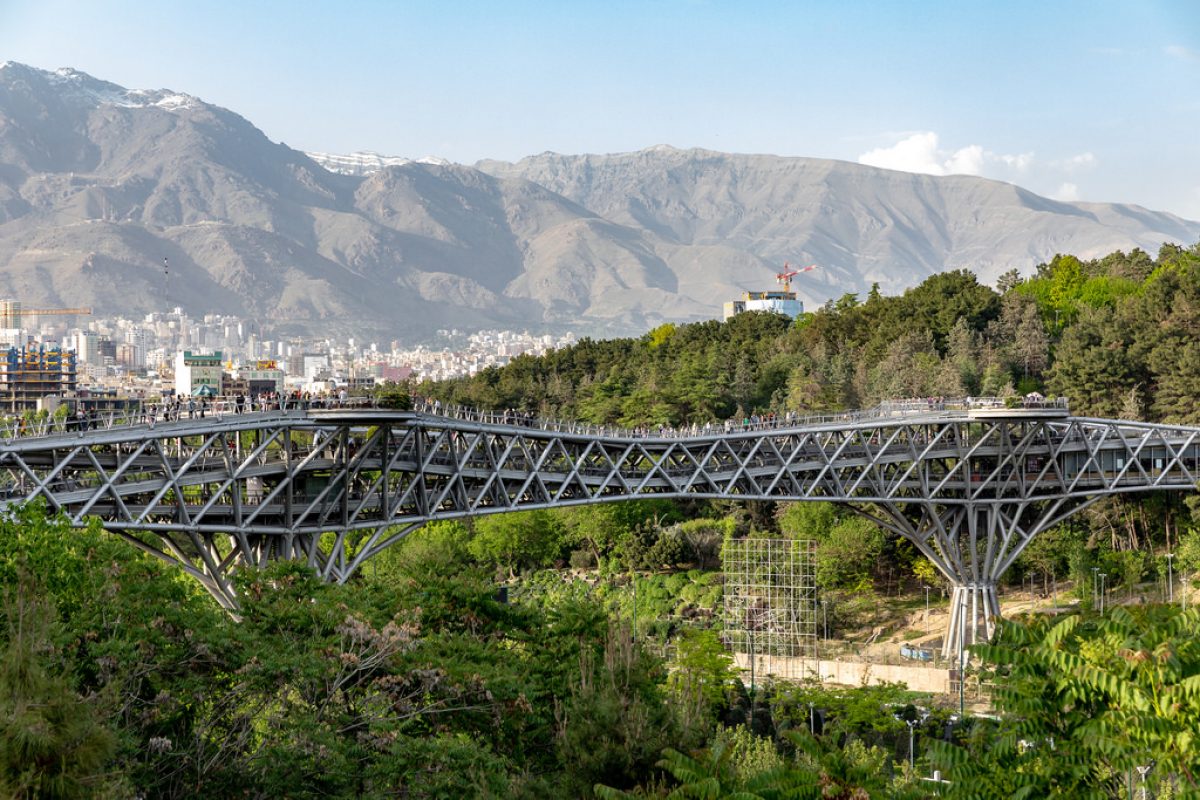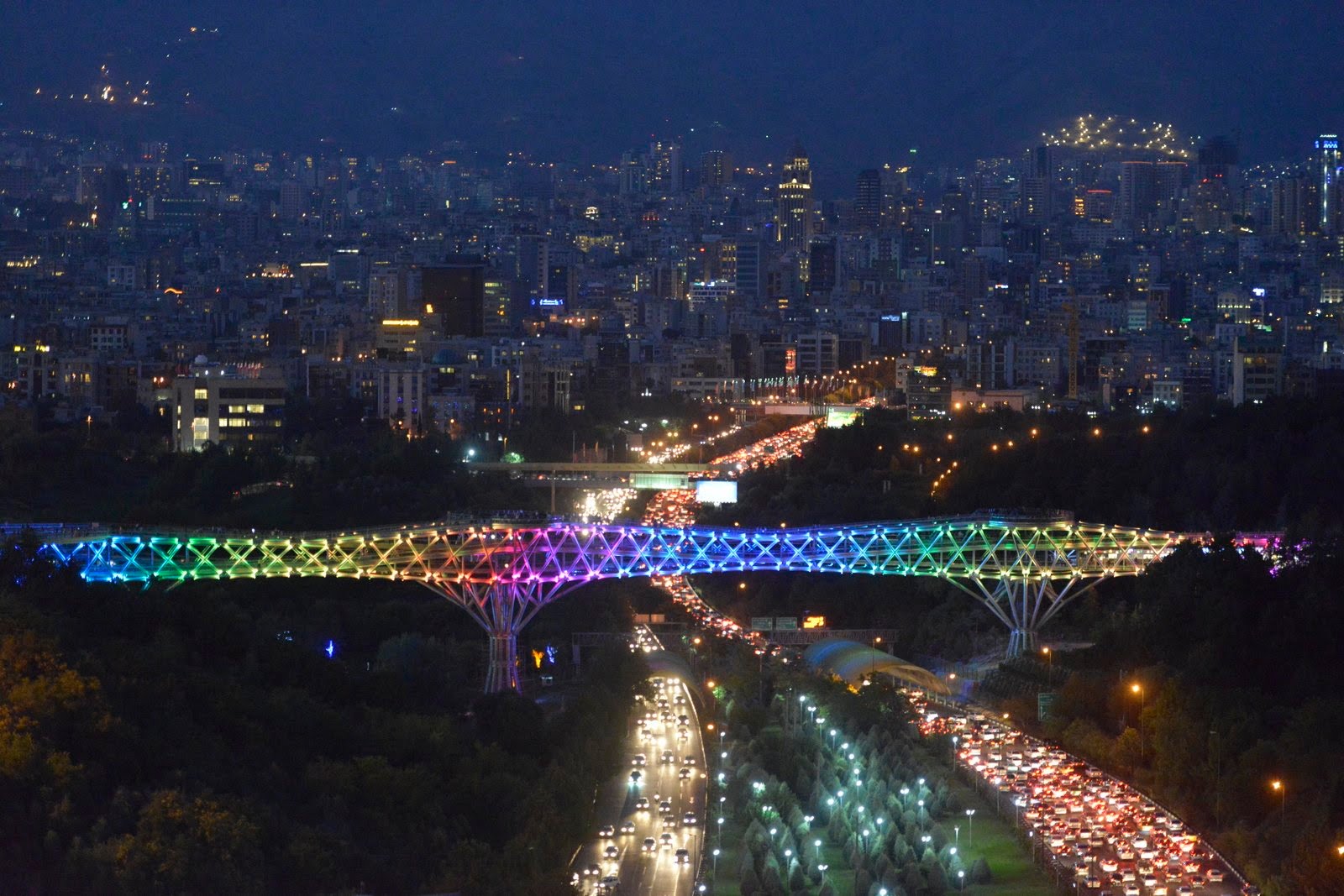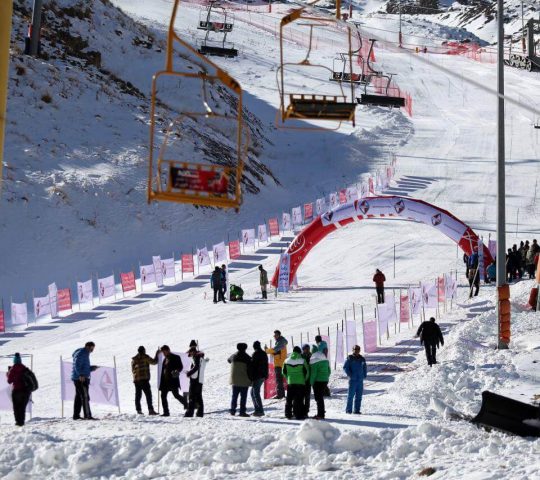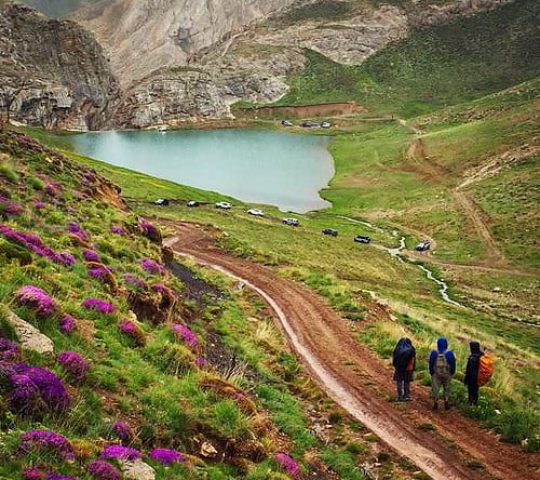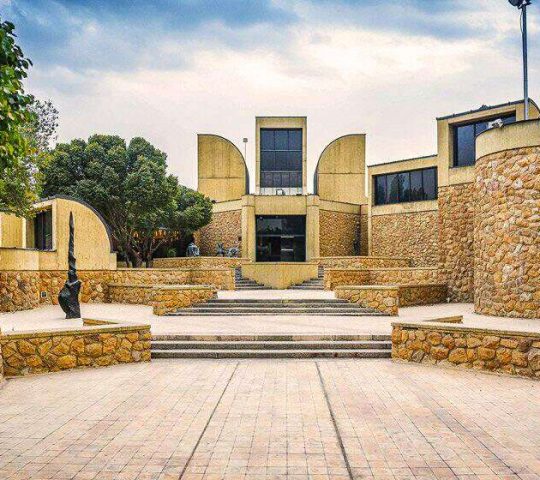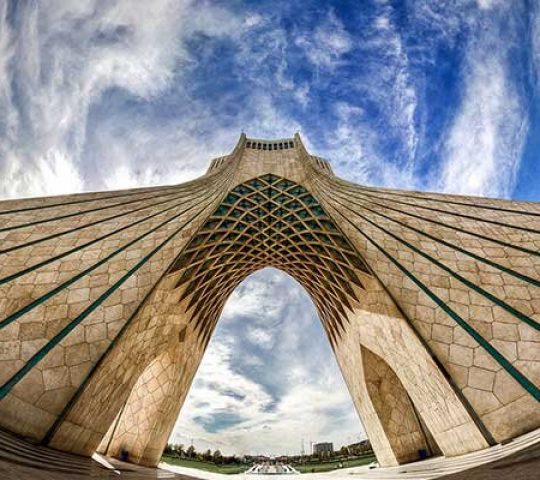Tabiat Bridge
Hightlight
-
 Air conditioner
Air conditioner -
 Car parking
Car parking -
 Coffee shop
Coffee shop -
 POS
POS
Tabiat Bridge is the longest pedestrian bridge in Tehran, connecting two large parks in the north of the city and designed to bridge the large highway that divides the two green areas.
The Tabiat Bridge is a lattice bridge in the Iranian capital. The bridge is located in the city district of Abas-Abad, or in the 7th district in the northeast of the city and bridges the valley that stretches the city highway Modares. The function of the bridge is to connect two green areas – the Water and Fire Park (Bustan-e Ab-o Atash) in the west and the Taleqani Forest Park in the east. The word “Tabiat” means “nature”. The bridge is named so because it sits between two large parks with dense vegetation.
Sections of Tabiat Bridge
The Tabiat Bridge and its beautiful infrastructure given to the city is made up of 2,000 tonnes of steel and 10,000 cubic meters of concrete and consists of three floors connected by stairs and ramps:
- The lower floor consists of restaurants, cafes, and other catering facilities.
- The middle floor is intended primarily for pedestrians, cyclists and skaters.
- The upper floor has the function of a lookout on two adjacent park areas and Mount Alborz.
Construction
The construction of the asymmetrical bridge is inspired by nature and the three lattice pylons are shaped like canopies, while the traditional Iranian architecture is functionally followed in which the bridges are not only of a traffic character but also a place of rest and leisure. The pedestrian path winds with a total length of 300 m, the approximate height of the three-storey bridge is 50 m, width up to 30 m, and the largest span is about 90 m. The Tabiat Bridge was designed by the Iranian bureau Diba Tensile Architecture, headed by architect Leila Araghian, and its structural subcontractor was the Italian company Maffeis. It has been under construction from the fall of 2010 and the completion of construction was in 2014. Tabiat Bridge has received several awards, including the 2016 Aga Khan Prize for Architecture.
Nature and technology go hand in hand in the Tabiat Bridge. As in Lumberjack’s UrbaNature philosophy, urban style intertwines with nature to create something new. The 270-metre long pedestrian bridge is experienced by the citizens as a meeting place, just as its creators intended, and has become a pure extension of the two parks.


